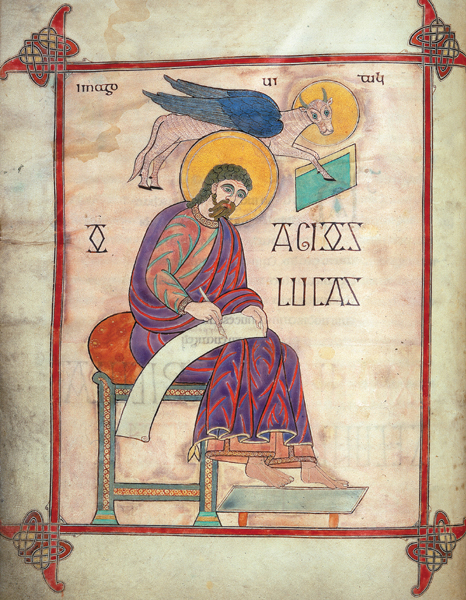Image Details

By permission of the British Library
A seated, contemplative Luke writes as a winged calf floats overhead with a book between its forelegs. By the end of the seventh century, when this illumination was created at the island monastery of Lindisfarne in northeastern England, most illustrations of Luke included a calf or ox, which Christian tradition had designated as his symbol (see the first sidebar to this article).
Early Christian sources identify Luke as a gentile physician who accompanied Paul on his proselytizing missions, a gifted writer who authored both the Third Gospel and the Book of Acts and an artist who painted portraits of the Virgin Mary. The earliest extant copy of the Third Gospel bears Luke’s name but only dates to about 175 to 225, more than a century after the gospel is thought to have been composed, and the Book of Acts does not identify its author. What do we really know about this obscure man of multiple talents? In the accompanying article Mikeal Parsons explores whether the characteristics attributed to Luke hold up under the scrutiny of modern biblical scholarship.
